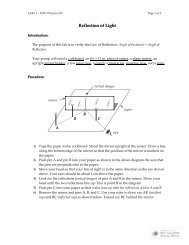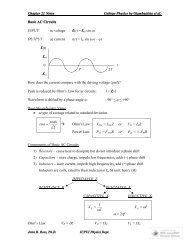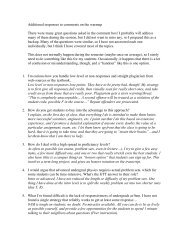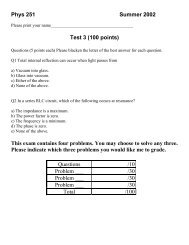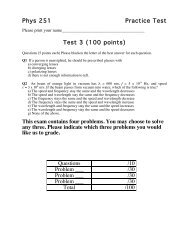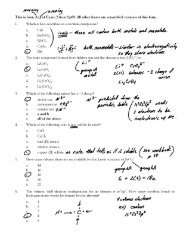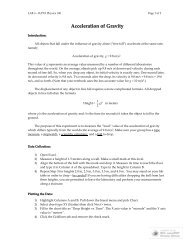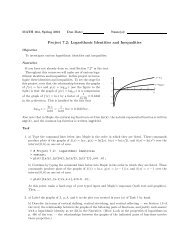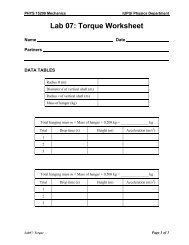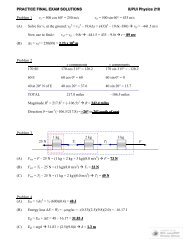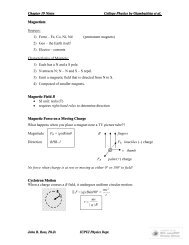Lab01 - Web Physics - IUPUI
Lab01 - Web Physics - IUPUI
Lab01 - Web Physics - IUPUI
You also want an ePaper? Increase the reach of your titles
YUMPU automatically turns print PDFs into web optimized ePapers that Google loves.
<strong>IUPUI</strong> <strong>Physics</strong> Department218/P201 LaboratoryExample: (9.8 ± 0.2) m/s 2In the above example, 9.8 m/s 2 is the average value and 0.2 m/s 2 is the error. The ±indicates that the measurements range between 9.6 m/s 2 and 10.0 m/s 2 .The fractional (or relative error) and the percent error are alternative ways ofexpressing the error:xfractional error = xpercent error = (fractional error)×100%Example: For the previous example, the fractional error is 0.20/9.8 = 0.020 and thepercent error is 2.0%. You could express the result as 9.8 m/s 2 ± 2.0%.It is often a matter of taste or expediency whether you choose to record your errors inabsolute, fractional, or percent form.When an experimental result is compared with a more reliable result (such as a resultaccepted by the international scientific community), the difference between the two iscalled the discrepancy, which can also be expressed in absolute, fractional, or percentform:absolute discrepancy = | A E |fractional discrepancy =A Epercent discrepancy = (fractional disc)×100%Awhere A is the accepted result, E is the experimental result, and the bars | * | indicateabsolute value (discrepancies are always positive).The following criterion is used to judge the accuracy of your results:Example:An experimental result agrees with an accepted value only if thediscrepancy between the two values is numerically less than the error inthe result. If this is case, we conclude that the result is accurate.Suppose you perform an experiment to measure the speed of sound in air (at STP).Your final result is 342 ± 1 m/s. The accepted value is 344 m/s. The absolutediscrepancy is |344 – 342| = 2 m/s which is greater than the absolute error (1 m/s). Yourresult does not agree with the accepted value and, therefore, is inaccurate.VI. Graphing and Linear InterpolationA graph is an accurate two-dimensional representation of experimental data. If youplot a graph by hand, use only high-quality graph paper (which you can purchase at thePage 4 of 8



